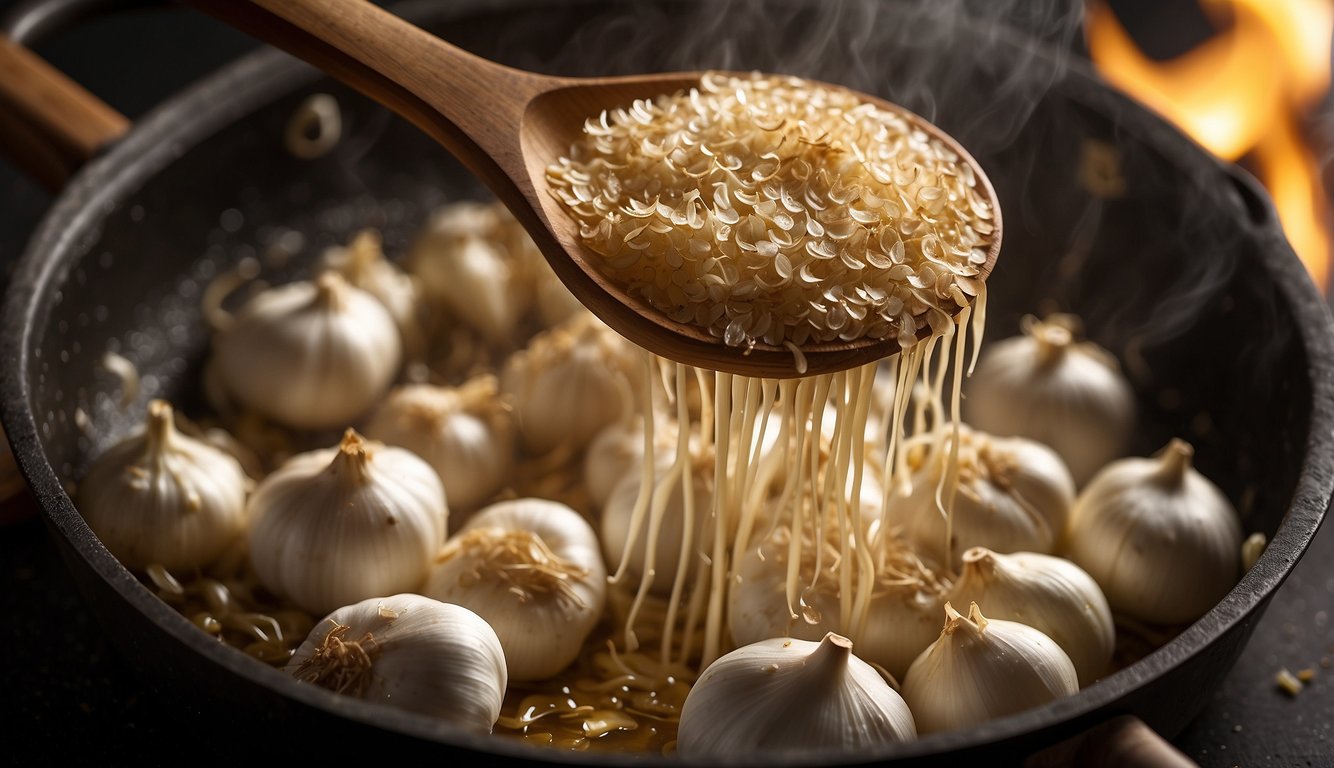TheHerbProf.com is a treasure trove of knowledge for those interested in natural healing and herbal remedies. The website is run by Paul Johnston MD. A naturopathic who has not only received extensive education in the field but also has personal experience in self-healing.
When it comes to cooking with garlic, elephant garlic is a unique and flavorful option that is worth exploring. Despite its name, elephant garlic is not actually garlic, but rather a member of the leek family. This bulbous vegetable is known for its milder flavor than traditional garlic, making it a versatile ingredient in a variety of dishes.
To cook elephant garlic, there are several methods to choose from. Roasting is a popular option, as it brings out the sweetness of the garlic while also softening it for easy use in spreads and dips. Simply slice off the top of the bulb, drizzle with oil, and bake in the oven until soft and caramelized. Alternatively, elephant garlic can be sautéed, boiled, or even used raw in salads or as a garnish. Experimenting with different cooking methods can help you discover your favorite way to use this unique ingredient.
Whether you’re a garlic lover or just looking to try something new, cooking with elephant garlic is a fun and flavorful way to enhance your culinary skills. With its milder flavor and versatility, it’s a great ingredient to have on hand in the kitchen.
Understanding Elephant Garlic
Characteristics
As a type of leek, elephant garlic (Allium ampeloprasum) is closely related to regular garlic (Allium sativum). However, it is characterized by its larger size and milder taste. The bulbs of elephant garlic can grow up to 10 centimeters in diameter, with individual cloves that are much larger than those of regular garlic. The skin of the bulbs is also thicker and looser than that of regular garlic, making it easier to peel.
Culinary Uses
Elephant garlic can be used in many of the same ways as regular garlic, but its milder flavor makes it a popular choice for those who find regular garlic too pungent. It can be used raw in salads or as a flavoring for dips and spreads. When cooked, it becomes even sweeter and more mellow, making it a great addition to soups, stews, and roasted vegetables. It can also be roasted whole, sliced, or minced, and used in marinades, dressings, and sauces.
Nutritional Profile
Like regular garlic, elephant garlic is a good source of vitamins and minerals, including vitamin C, vitamin B6, and manganese. It also contains small amounts of calcium, potassium, and iron. However, because of its milder flavor, it may be necessary to use more elephant garlic than regular garlic to achieve the same level of flavor in a dish.
In summary, elephant garlic is a type of leek that is characterized by its large size and mild flavor. It can be used in many of the same ways as regular garlic, but its milder taste makes it a popular choice for those who find regular garlic too pungent. It is a good source of vitamins and minerals, but may require more cloves to achieve the same level of flavor in a dish as regular garlic.
Preparation Basics – Cooking Elephant Garlic
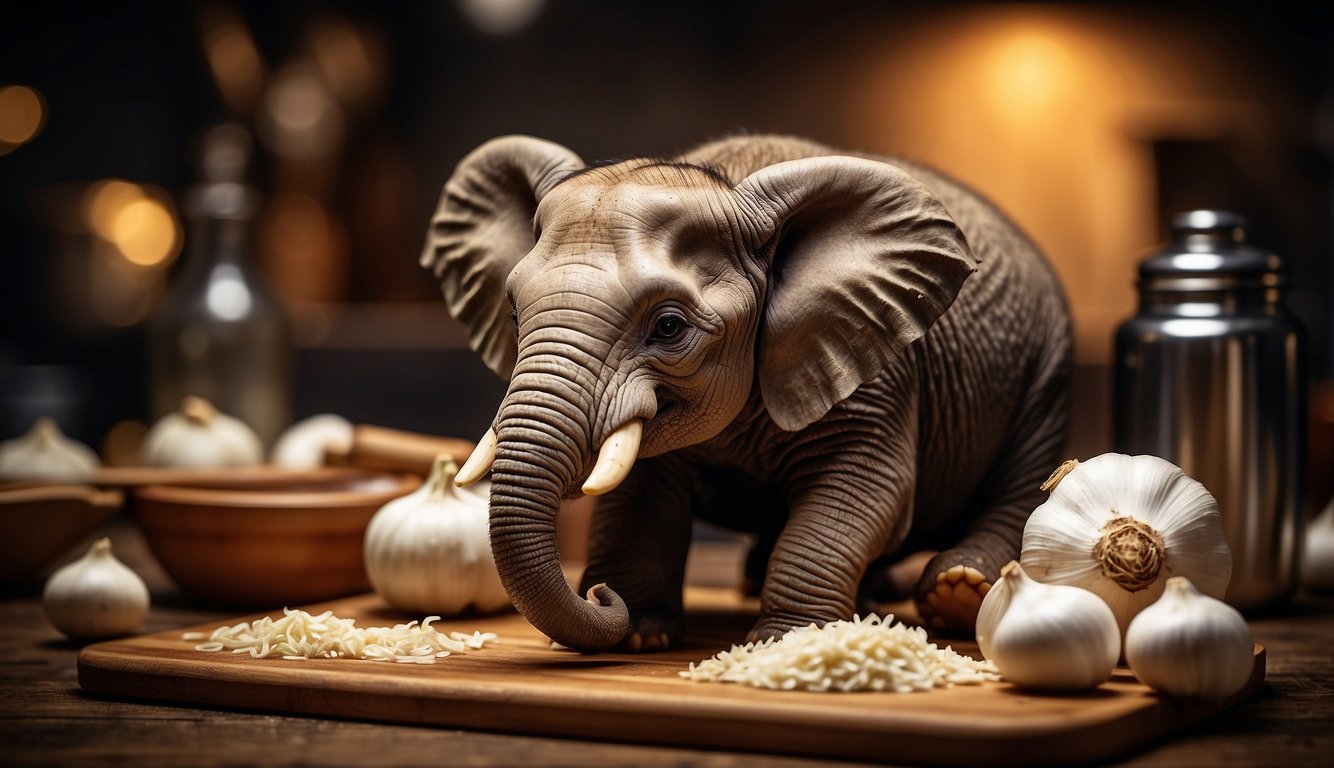
Selecting Quality Cloves
When selecting elephant garlic cloves, it is important to choose firm and plump ones that are free from any soft spots or mold. The cloves should also have a papery skin that is tight and unbroken. If the skin is loose or damaged, it may indicate that the garlic is old or has been mishandled.
Storing Techniques
Elephant garlic can be stored for several weeks if it is kept in the right conditions. It is best to store it in a cool, dry, and dark place, such as a pantry or cupboard. It is also important to keep it in an airtight container to prevent moisture from getting in, which can cause the garlic to spoil.
Peeling and Chopping
To peel elephant garlic, gently crush the clove with the flat side of a knife, then remove the skin. Alternatively, you can place the clove in a bowl of hot water for a few minutes to loosen the skin. When chopping elephant garlic, it is important to use a sharp knife to prevent crushing or bruising the cloves. You can slice, mince, or chop the garlic, depending on your recipe.
Remember that garlic cloves have a limited shelf life, so it is important to use them within a reasonable time frame. By following these simple preparation basics, you can ensure that your elephant garlic is fresh, flavorful, and ready to use in your favorite recipes.
Cooking Techniques
When it comes to cooking elephant garlic, there are a few different techniques to consider. In this section, I will cover two of the most popular methods: roasting and incorporating into dishes.
Roasting Elephant Garlic
Roasting is a great way to bring out the sweet, mellow flavor of elephant garlic. To roast elephant garlic, start by preheating your oven to 400°F. Then, using a sharp knife, slice off the top of the garlic bulb to expose the individual cloves. Drizzle the garlic with olive oil, wrap it in aluminum foil, and place it in a baking dish. Roast the garlic in the oven for 30-40 minutes, or until it is soft and golden brown.
Incorporating into Dishes
Elephant garlic can be used in a variety of dishes to add flavor and depth. It can be used in place of regular garlic in most recipes, but keep in mind that it has a milder flavor, so you may need to use more cloves to achieve the same level of garlic flavor. Try adding roasted elephant garlic to mashed potatoes, soups, or roasted vegetables for a delicious twist on classic dishes. You can also use it as a spread on bread or crackers, or mix it into a homemade salad dressing for an extra burst of flavor.
Whether you choose to roast elephant garlic or incorporate it into your favorite dishes, this versatile ingredient is sure to add a delicious flavor to any meal.
Recipes and Pairings
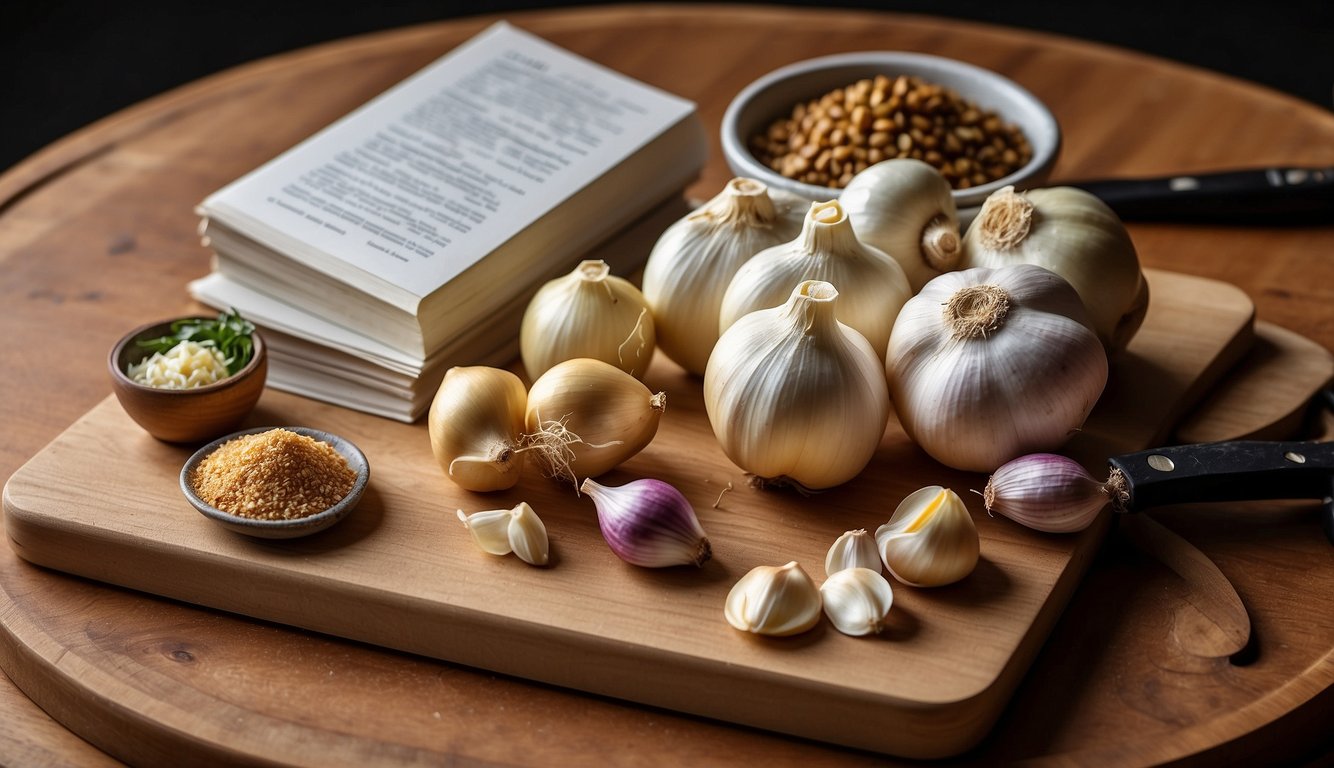
Garlic-Infused Oils
One of my favorite ways to use elephant garlic is by infusing it into oil. It’s simple to make and can add a delicious garlic flavor to many dishes. To make garlic-infused oil, I peel and slice the garlic and then simmer it in olive oil for about 10 minutes. Then, I strain the oil and store it in a jar. This oil can be used in dressings, pasta dishes, roasted vegetables, and more.
Sides and Appetizers
Elephant garlic can be used in a variety of side dishes and appetizers. One of my go-to recipes is roasted garlic bread. I slice a baguette and then spread a mixture of butter, garlic, and herbs onto each slice. Then, I bake it in the oven until it’s crispy and golden brown. It’s the perfect side dish for pasta or soup.
Another great option is roasted garlic hummus. I blend chickpeas, tahini, lemon juice, and roasted garlic together until it’s smooth. It’s a healthy and flavorful dip that pairs well with vegetables or pita chips.
Main Courses
Elephant garlic can also be used in main courses. One of my favorite recipes is garlic roasted chicken. I stuff the chicken with garlic and herbs and then roast it in the oven until it’s crispy and juicy. It’s a simple and delicious meal that’s perfect for a family dinner.
Another great option is garlic shrimp pasta. I sauté shrimp with garlic and olive oil and then toss it with pasta, lemon juice, and parsley. It’s a quick and easy meal that’s perfect for a weeknight dinner.
Overall, elephant garlic can add a delicious garlic flavor to many dishes. Whether you’re making a side dish, appetizer, or main course, there’s always a way to incorporate this flavorful ingredient.
Seasoning and Flavor Enhancements

As I mentioned earlier, elephant garlic has a mild flavor compared to regular garlic. However, it can still benefit from some seasoning and flavor enhancements to make it even more delicious. In this section, I will cover some of the best ways to season and enhance the flavor of your roasted elephant garlic.
Herbs and Spices – Cooking Elephant Garlic
One of the easiest ways to add flavor to roasted elephant garlic is by using herbs and spices. My personal favorite is rosemary, as it pairs well with the caramelized flavor of the garlic. Simply chop up some fresh rosemary and sprinkle it over your garlic before roasting. You can also try using other herbs like thyme or oregano, depending on your personal preference.
Salt and Pepper
While elephant garlic has a mild flavor, it can still benefit from a little bit of salt and pepper. I recommend using kosher salt and freshly ground black pepper for the best flavor. Be careful not to over-season your garlic, as it can quickly become overpowering.
Overall, seasoning and flavor enhancements can take your roasted elephant garlic to the next level. Whether you prefer fresh herbs or a simple sprinkle of salt and pepper, there are plenty of ways to enhance the mild flavor of this delicious ingredient.
Health and Dietary Considerations – Cooking Elephant Garlic
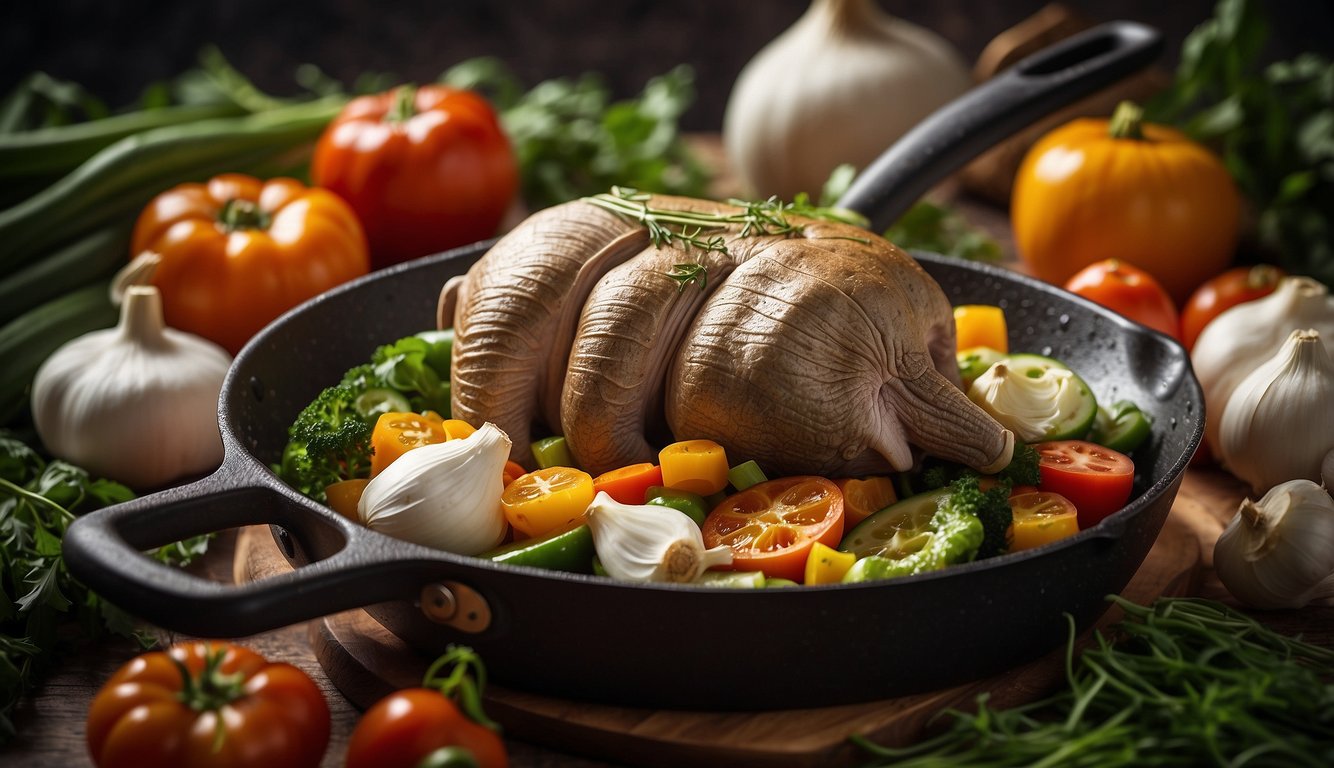
Nutrients and Antioxidants
As a member of the allium family, elephant garlic is a great source of essential nutrients. It contains vitamins C, B6, and B1, as well as minerals such as manganese, calcium, and selenium. Additionally, elephant garlic is rich in antioxidants such as allicin, which has been found to have anti-inflammatory and anti-cancer properties.
Dietary Impact
Elephant garlic is a low-calorie food, with only 5 calories per clove. It is also low in fat and high in fiber, making it a great addition to a healthy diet. Elephant garlic has been found to have a positive impact on heart health, as it can help lower cholesterol levels and reduce the risk of heart disease.
When cooking with elephant garlic, it is important to keep in mind that it has a milder flavor than regular garlic. As a result, you may need to use more cloves to achieve the same level of garlic flavor in your dishes. However, this can be a positive aspect for those who find regular garlic too strong.
Overall, incorporating elephant garlic into your diet can provide a variety of health benefits due to its nutrient content and antioxidant properties.
Preservation and Shelf Life – Cooking Elephant Garlic
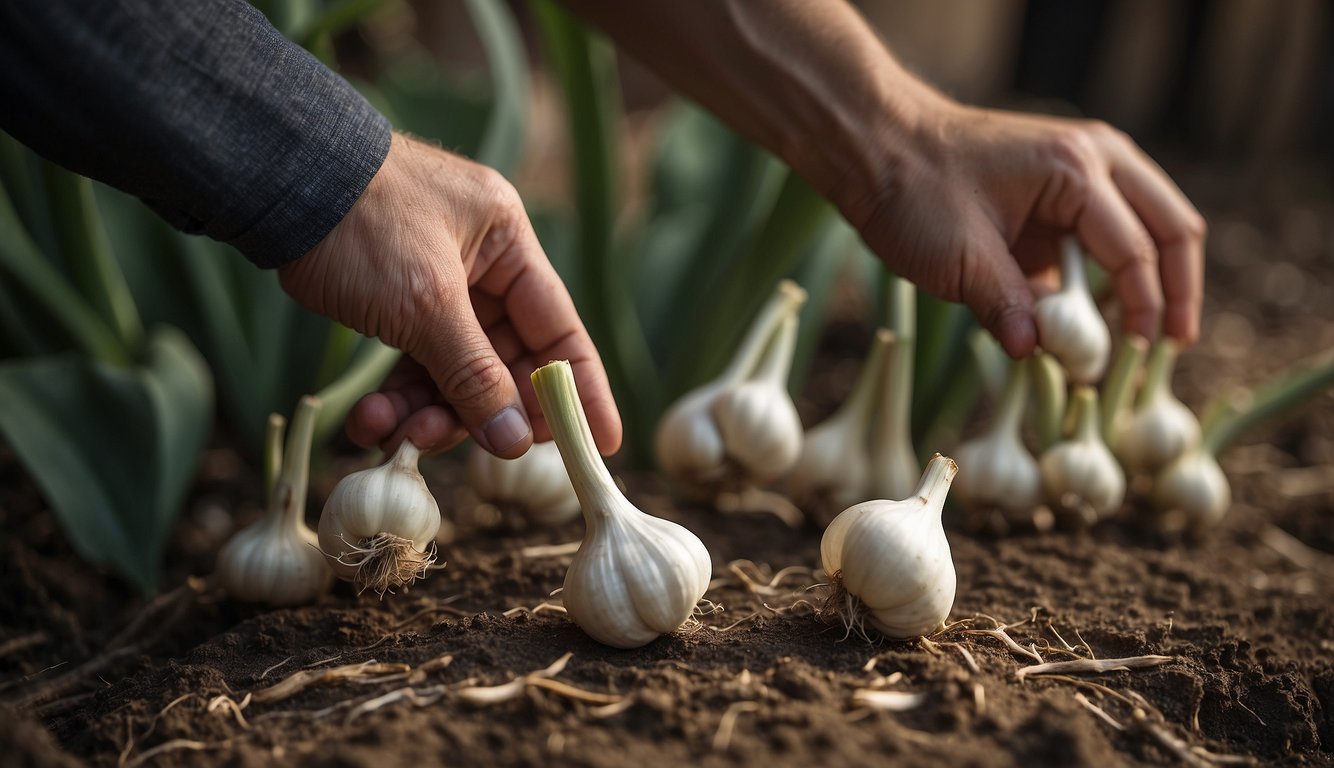
As with other types of garlic, proper storage is key to preserving the freshness and flavor of elephant garlic. Here are some tips to help you store elephant garlic properly:
Proper Storage – Cooking Elephant Garlic
- Store elephant garlic in a cool, dry, and well-ventilated place. A consistent temperature of 50-60°F (10-15°C) is ideal for storing elephant garlic and extending its shelf life.
- Avoid storing elephant garlic in a plastic bag, as it can trap moisture and lead to spoilage. Instead, use a mesh bag, paper bag, or even a wooden crate to store elephant garlic.
- Check the cloves regularly for any signs of sprouting or mold. Remove any cloves that show signs of spoilage to prevent the spread of mold or bacteria.
Freezing and Drying
If you have more elephant garlic than you can use within a few weeks, you can also freeze or dry it for later use.
- To freeze elephant garlic, peel and chop the cloves and place them in an airtight container or freezer bag. Label the container with the date and freeze for up to six months.
- To dry elephant garlic, hang the bulbs in a well-ventilated area away from direct sunlight for about two weeks until they are adequately dried. After drying completely, wrap them individually using paper bags before placing them into baskets or mesh bags, then store them at room temperature below 80°F (25°C).
By following these tips, you can extend the shelf life of elephant garlic and ensure that it stays fresh and flavorful for longer.
Serving Suggestions – Cooking Elephant Garlic
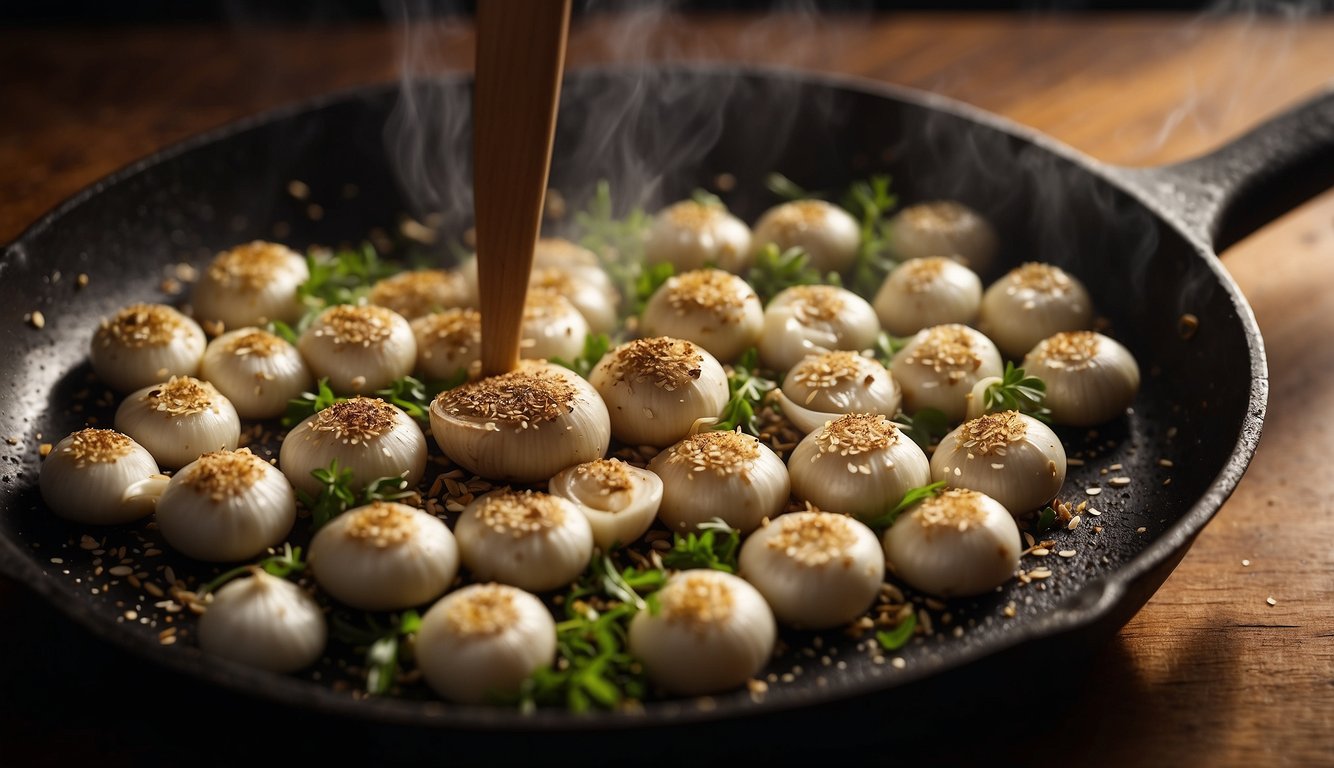
When it comes to serving roasted elephant garlic, the possibilities are endless. Here are a few of my favorite ways to enjoy this flavorful ingredient.
Appetizers and Spreads – Cooking Elephant Garlic
Roasted elephant garlic is perfect for spreading on crusty bread or crackers for a delicious appetizer. To make a garlic spread, simply mash the roasted cloves with some butter or cream cheese and season with salt and pepper to taste. You can also add some fresh herbs like thyme or rosemary for extra flavor.
Another great way to enjoy roasted elephant garlic is as a dipping sauce. Mix the mashed cloves with some Greek yogurt or sour cream and serve with fresh veggies or pita bread. This makes a great addition to any party or gathering.
Salad and Pasta Toppings
Roasted elephant garlic can also be used to add flavor to salads and pasta dishes. Simply chop the cloves and add them to your favorite salad dressing or pasta sauce. The sweet and mellow flavor of the garlic pairs well with a variety of ingredients, from roasted vegetables to grilled chicken.
For a quick and easy salad dressing, whisk together some olive oil, lemon juice, and mashed roasted garlic. This dressing is perfect for drizzling over a simple green salad or roasted vegetables.
In summary, roasted elephant garlic can be used in a variety of ways to add flavor to your favorite dishes. Whether you’re making an appetizer, a dipping sauce, or a salad dressing, this versatile ingredient is sure to impress.
Growing and Harvesting – Cooking Elephant Garlic
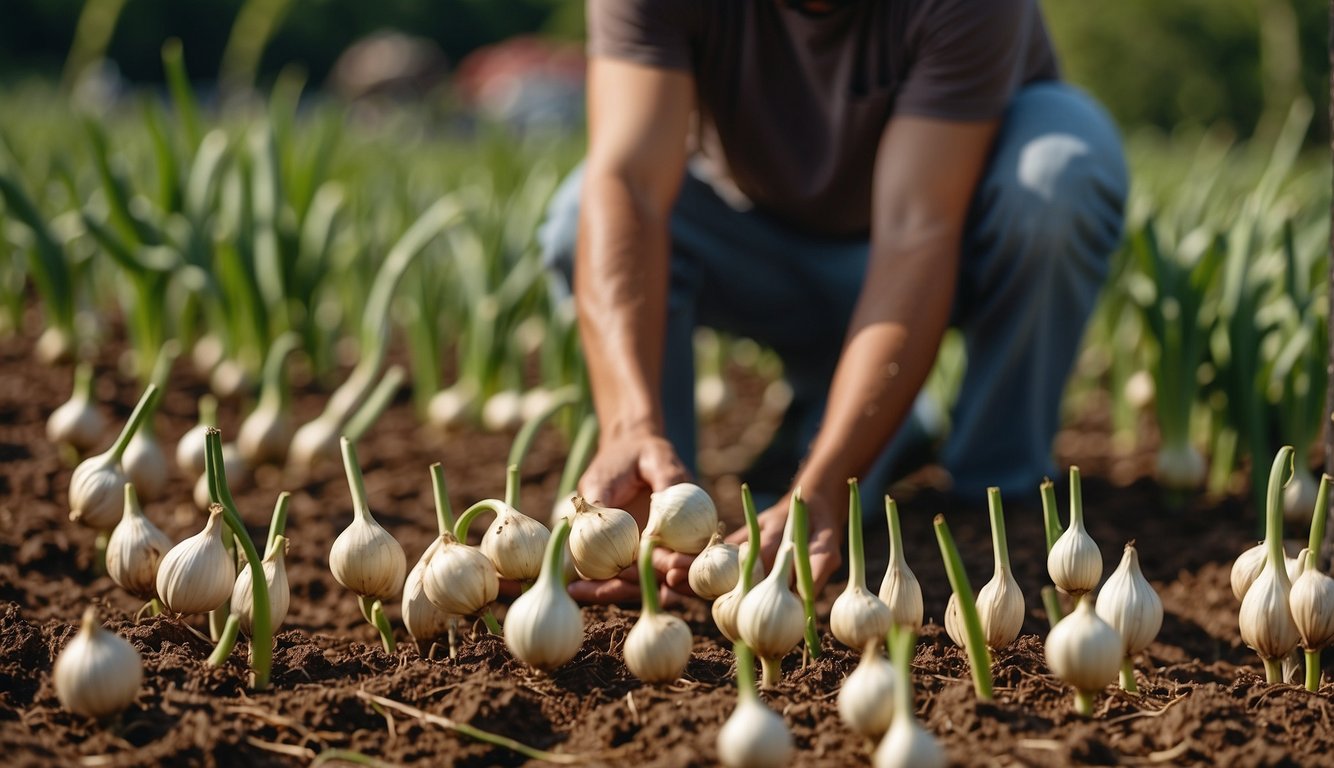
Home Gardening
Growing elephant garlic in your home garden is easy and rewarding. Elephant garlic is a unique and versatile plant that offers both visual appeal in the garden and culinary versatility in the kitchen. It looks like a jumbo bulb of garlic and has a milder taste. The plant grows best in well-drained soil with plenty of organic matter. It is also important to ensure that the soil is not too acidic, as this can adversely affect the growth of the plant.
To grow elephant garlic, you can plant individual cloves in the fall or spring. Plant large cloves pointy-end up about six inches deep into the amended soil. Space the cloves a minimum of eight inches apart, then cover with more soil. Elephant garlic planted in the fall may have enough time to split into cloves or bulblets by the summer, while spring-planted elephant garlic will likely produce a monobulb at first. It is important to keep the soil moist but not waterlogged during the growing season.
Harvest and Yield
Knowing when to harvest elephant garlic is a little more complicated than knowing when to harvest onions. But, here are some indicators it is time to harvest. It has been 180-210 days since the cloves were planted. The lower leaves will turn brown. The other leaves grow paler and light green. When the leaves start to yellow and fall over, it is time to harvest the garlic.
When harvesting elephant garlic, it is important to use a garden fork or shovel to gently lift the bulbs out of the soil. Be careful not to damage the bulbs or bruise them. Once harvested, elephant garlic can be stored for several months in a cool and dry place. The yield of elephant garlic can vary depending on growing conditions, but on average, each bulb can produce 4-6 cloves.
Growing and harvesting elephant garlic is a fun and easy process that can be done in your home garden. It is important to ensure that the soil is well-drained and not too acidic. Harvesting the garlic at the right time is crucial to ensure freshness and yield.
Cooking Elephant Garlic
Today, we’re stepping into the flavorful world of Elephant Garlic. This giant cousin of regular garlic is not just bigger, it’s also milder and sweeter!
Firstly, let’s talk about preparation. Elephant Garlic is easy to peel and chop, thanks to its large size. But remember, bigger pieces mean milder flavor!
Now, the cooking part. Elephant Garlic can be used just like regular garlic. Saute it, roast it, or even grill it! It adds a gentle, garlicky sweetness to your dishes.
And here’s a fun fact! Roasted Elephant Garlic becomes creamy and spreadable. It’s like garlic butter, but better!
So, next time you’re in the mood for some garlic goodness, give Elephant Garlic a try. Your taste buds will thank you!
For more culinary adventures, do visit the website theherbprof.com. Keep it flavorful, folks!
References – Cooking Elephant Garlic
Little Herb Encyclopedia, by Jack Ritchason; N.D., Woodland Publishing Incorporated, 1995
The Ultimate Healing System, Course Manual, Copyright 1985, Don Lepore
Planetary Herbology, Michael Tierra, C.A., N.D., Lotus Press, 1988
Handbook of Medicinal Herbs, by James A. Duke, Pub. CRP Second Edition 2007
The Complete Medicinal Herbal, by Penelope Ody, Published by Dorling Kindersley
Check the Following Articles!
Are Hostas Edible? Everything You Need to Know
Cinnamon Rooting Hormone: Natural Alternative
DIY Bokashi Bucket: Making A Kitchen Composting System
Frequently Asked Questions – Cooking Elephant Garlic

How do you properly roast elephant garlic in the oven?
To roast elephant garlic in the oven, slice off the top to expose the cloves, drizzle with olive oil, wrap in foil, and bake at 400°F for 30-40 minutes. This will result in a sweet and mellow flavor. [1]
What are the best practices for cooking elephant garlic in an air fryer?
Cooking elephant garlic in an air fryer is not recommended. The high heat and dry air can cause the garlic to become bitter and unpleasant. It is best to stick to traditional roasting methods for optimal flavor.
Can elephant garlic be used as a substitute for regular garlic in recipes?
Yes, elephant garlic can be used as a substitute for regular garlic in most recipes. Keep in mind that it has a milder flavor, so you may need to use more cloves to achieve the same level of garlic flavor. [1]
What are the taste differences between elephant garlic and regular garlic?
Elephant garlic has a milder, sweeter flavor compared to regular garlic. This makes it a great option for those who want a hint of garlic flavor without the overpowering taste. [4]
What are some ideal dishes to incorporate elephant garlic into?
Elephant garlic can be used in a variety of dishes, including roasted meats, vegetables, and soups. It pairs well with herbs such as thyme and rosemary, as well as with other vegetables like potatoes and carrots. [5]
How long should elephant garlic be roasted to achieve optimal flavor?
Elephant garlic should be roasted for 30-40 minutes at 400°F to achieve optimal flavor. This will result in a sweet and mellow taste that is perfect for a variety of dishes. [1]
